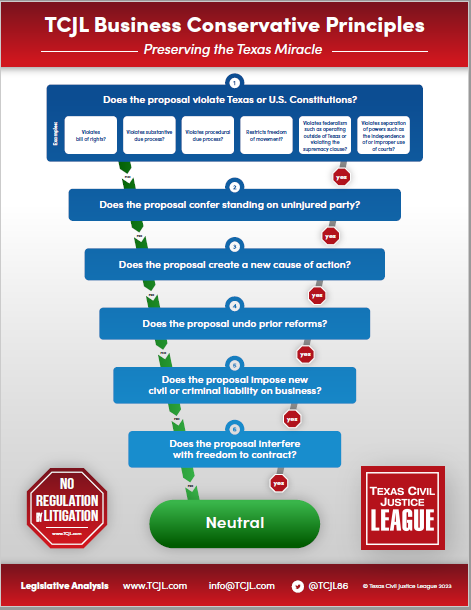 In re Space Exploration Technologies Corp. and Lauren Krueger (No. 13-24-00042-CV; March 28, 2024) arose from a personal injury lawsuit stemming from an automobile accident. The case went to a jury, which found defendant Krueger was negligent but not acting within the course and scope of her employer, Space Technologies, when the accident occurred. The jury awarded three plaintiffs $73,500, $40,000, and $10,000, respectively. After the trial court entered judgment on the verdict, two of the plaintiffs filed a motion for new trial based on improper jury argument. They argued that “counsel for relators attacked the integrity of real parties’ counsel, questioned lay witnesses regarding the legal basis of their claims, and argued that the case was ‘an attorney-driven shakedown.’’ After a hearing, the trial court granted the motion for new trial, stating that “the incurable arguments by defense counsel more likely than not caused the rendition of the subject verdict.” Defendants sought mandamus relief from the court of appeals.
In re Space Exploration Technologies Corp. and Lauren Krueger (No. 13-24-00042-CV; March 28, 2024) arose from a personal injury lawsuit stemming from an automobile accident. The case went to a jury, which found defendant Krueger was negligent but not acting within the course and scope of her employer, Space Technologies, when the accident occurred. The jury awarded three plaintiffs $73,500, $40,000, and $10,000, respectively. After the trial court entered judgment on the verdict, two of the plaintiffs filed a motion for new trial based on improper jury argument. They argued that “counsel for relators attacked the integrity of real parties’ counsel, questioned lay witnesses regarding the legal basis of their claims, and argued that the case was ‘an attorney-driven shakedown.’’ After a hearing, the trial court granted the motion for new trial, stating that “the incurable arguments by defense counsel more likely than not caused the rendition of the subject verdict.” Defendants sought mandamus relief from the court of appeals.
In an opinion by Justice Longoria, the court denied the petition without prejudice, as well as Plaintiffs’ motion to abate the appeal pending the trial court issuing a new order stating the specific reasons for granting a new trial. The court commenced its analysis with the proposition that “[a]n order granting a new trial must provide ‘an understandable, reasonably specific explanation why [the parties’] expectations are frustrated by a jury verdict being disregarded or set aside, the trial process being nullified, and the case having to be retried’” (citation omitted). It then proceeded to a merits-based review of the trial court’s “articulated reasons” for granting new trial (citation omitted), which must refer to the evidence in the record. Here the court determined that the new trial order was insufficient on its face “insofar as it fails to provide an adequate explanation for the trial court’s ruling.” In order to meet the sufficiency requirement, the order must identify the “incurably harmful” argument(s) or “why the otherwise-curable problem … was nonetheless not susceptible to cure” (citation omitted).
The question then became whether Plaintiffs’ motion to abate so that the trial court could issue a new order was authorized by Texas Rule of Appellate Procedure 44.4. This rule holds that “[a] court of appeals must not affirm or reverse a judgment or dismiss an appeal if: (1) the trial court’s erroneous action or failure or refusal to act prevents the proper presentation of a case to the court of appeals; and (2) the trial court can correct its action or failure to act.” The rule further mandates the court of appeals to “direct the trial court to correct the error,” thus allowing the court “to proceed as if the erroneous action or failure to act had not occurred.” Observing that the rule applies to appeals and not to original proceedings, the rule nevertheless does not “confer[] authority on an appellate court to abate an appeal while there are significant issues yet to be determined by the trial court” (citation omitted). One such “significant issue,” the court stated, is the trial court’s “responsibility to provide a reasonably specific explanation for setting aside a jury’s verdict that is based on facts and circumstances of the case . . . .” Abatement was thus not an option in this case.
Down to the issue of whether to grant mandamus or not, the court decided not to because the record did not show that Defendants/Relators brought the trial court’s attention to the facial invalidity of the order or requested it to issue a new order stating an explanation. “This omission,” the court concluded, “runs afoul of the ‘demand’ principle underlying mandamus review. Because mandamus is an extraordinary remedy, ‘the right to mandamus relief generally requires a predicate request for action by the respondent, and the respondent’s erroneous refusal to act’” (citations omitted). The court further declined to speculate as which of defense counsel’s arguments the trial court found objectionable. This would require an independent review of the record and applicable law, which would put the court in the position of an “advocate” for one of the parties in the case. That left the court with nothing further to do than deny the petition and the request to abate.
There are several interesting aspects of this case. The defense counsel’s argument about an “attorney-shakedown” is certainly noteworthy, but in view of the plaintiffs’ verdict, one wonders how “incurably harmful” it really was (setting aside whether it should have been made in the first place). The procedural snafus balled everything up in the court of appeals, which, at least in our reading of the opinion, appeared to annoy the court into leaving the whole mess up to the parties and trial court to sort out.












